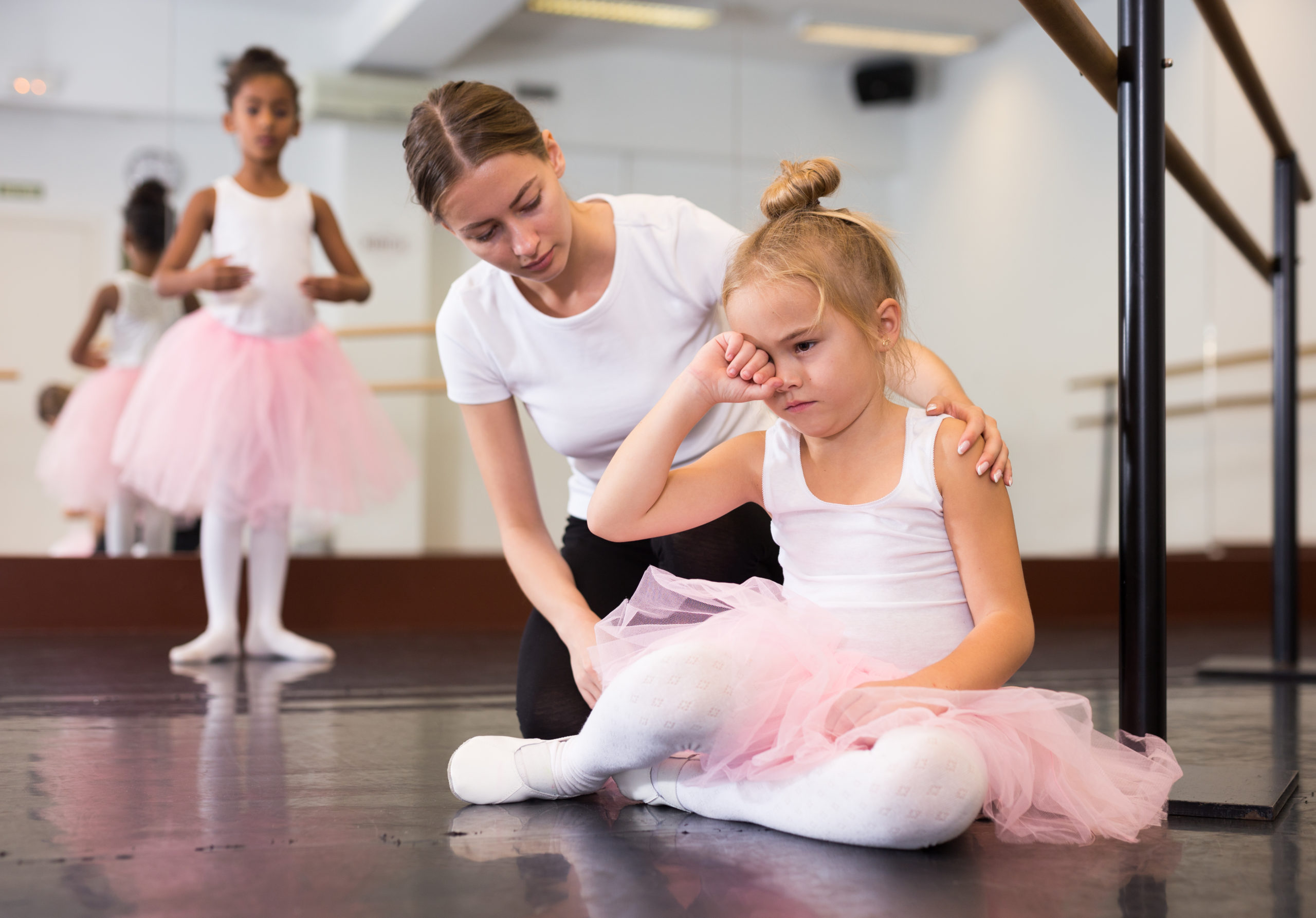
Dance teachers can be counted on for a lot more than just teaching a perfect tendu combination or engaging a studio of high-energy 6-year-olds. Sometimes, they can also be the first to notice when a student is experiencing abuse and take the steps needed to protect them from harm, both inside or outside the studio.
“Dance teachers play an important role in their students’ lives,” says clinical psychologist and Youth Protection Advocates in Dance (YPAD) advisor Dr. Christina Donaldson. “Not only are they teachers, but they also can serve as mentors, confidants and supportive adults. Oftentimes, dance studios become a second home to students, and so it’s important for students to have a safe space.”
Of course, it can be terrifying to realize that one of your students is in harm’s way, but by developing awareness of the signs of abuse, owning your responsibility, and taking action, you can save lives.
Spot the Signs
According to Dr. Paula Thomson, a clinical psychologist and dance teacher based in California, abuse can come in many forms—physical abuse, emotional abuse, sexual abuse and neglect. And while dance teachers are not meant to be experts in child abuse, your students likely feel very close to you, and you may see them in the studio for many hours over the course of a single week. “Most teachers have a good sense of the child they are instructing and what their typical behavior looks like,” says Thomson. In many ways, spotting possible abuse means trusting your gut when something seems off.
Donaldson says dance teachers may see “red flags” that may indicate that a student is being abused:
- Withdrawal in dance class or from friends or usual activities
- Changes in behavior, such as aggression, anger, hostility or hyperactivity
- Depression, anxiety, unusual fears, a sudden loss of self-confidence or drastic changes in their interests
- Frequent absences
- Reluctance to leave the dance studio activities, as if they don’t want to go home
- Rebellious or defiant behavior
- Self-harm or attempts at suicide. (Sometimes one can see signs of self-harm on the arms or legs.)
- Physical signs of abuse, such as bruises
In the case of physical abuse, Thomson advises that you look out for marks and bruises that look like defense injuries or visible signs of a hand or belt. Any injuries should become of concern if they appear frequently. “In children or adults who are being abused, you may notice that they sort of flinch when you touch them,” she says. “That is true of both physical and sexual abuse.” She adds that emotional abuse may cause some students to become withdrawn, but others may act out. The key is noticing a clear change in behavior.
Know Your Responsibility
The depth of your responsibility, from both an ethical and a legal standpoint, is different if the dancer is a minor or an adult (18 years or older). In many states dance teachers are considered mandated reporters and could face legal action if they fail to report suspected abuse of a minor. Thomson says that if you live in a state where you are a mandated reporter, you are required to report within 24 hours of reasonably suspecting abuse of a minor. If you are not mandated by law to report, you are considered a permissive reporter and are encouraged to do so in the interest of the child.
In a recent lawsuit filed by 56 former students at University of North Carolina School of the Arts, more than half of them dancers, eight former instructors are being accused of abuse and over 20 defendants are being sued for their failure to intervene for the safety of the students. Whether reporting is required by law or not, “anybody who works with children in any capacity should be a mandated reporter of the heart,” says Daphne Young, chief communications officer of Childhelp, a nonprofit organization dedicated to abused and at-risk children.
If you suspect an adult is being abused, whether they’re a dancer you are teaching or a peer, you do not have the same responsibility to report. In these cases, the best you can do is to address the dancer with what you have noticed and why you are concerned, and provide them with resources for sexual abuse or domestic violence. “Remind them that they can file a report with the police without pressing charges against their abuser,” says Thomson. While they may not wish to take legal action, filing a report will mean that the behavior may be on the alleged abuser’s record (depending on state and local laws) if future incidents occur.
How to Take Action
It can be understandably uncomfortable and even scary to report suspected abuse. You don’t want to be wrong about your concerns and cause harm to a potentially innocent party. You may also be concerned that reporting will place you or your school in the middle of some kind of scandal.
Using a help line is a good step to check your concerns if you are nervous to make a report to child protective services. “I think it’s important for folks to understand the Childhelp National Child Abuse Hotline is different from the police or CPS,” says Young. “It’s a soft place to land with a professional counselor where you can have a slower-paced, searching conversation or receive treatment in the moment.” The Childhelp Hotline is staffed by professional counselors rather than volunteers, and they can translate more than 170 languages. Counselors are available on the phone or via text for children experiencing abuse and for adults who want to help them.
If you do need to report suspected abuse to child protective services, you will find that many of your fears are unfounded. “You don’t have to have proof, and it’s not your job to gather evidence,” advises Misty Lown, leader of Youth Protection Advocates in Dance. “All you need is to suspect that a student is being abused and make a report. Let the professionals take it from there.” Your report will be taken anonymously—your name and affiliation to your studio will not be shared during any part of the investigation. Ultimately it will be the professionals at CPS who determine if the report requires a child welfare check. Thomson adds that even if your report does not meet the criteria for CPS to act, they will note your statement. If they receive other reports on the same person in the future, your report can contribute to stopping ongoing abuse.
If a student discloses abuse to you, and that student is a minor, you are required to report it as a mandated reporter. “You have to let them know that you have to protect them by telling someone,” says Thomson. “Tell them that it’s good that they told you, and that they aren’t going to get into trouble.”
Foster a Safe Environment
Many cases of abuse within dance environments have come to light in the past several years. The best thing dance educators can do to ensure the safety of their students is to proactively create safe spaces. This should start by having sound student safety and reporting policies that are shared with students, parents and teachers. “All studios should adopt a standard of care that includes background checks for all employees and contractors that have student contact as well as requiring abuse awareness, prevention and response training, such as YPAD Certification,” says Lown.
For other victims and survivors of abuse, the dance studio may be the safest place in their lives. Consider posting resources and phone numbers for local resources and hotlines for mental health and abuse on the bulletin board, on the backs of bathroom stall doors, or both. Doing so may not only provide a needed source of help for one of your students, it also sends the message that they are in a safe space that cares about their safety and well-being. “A weekly dance class is a type of community, and as such we have a responsibility to each other,” says Lown. “This responsibility doesn’t have to be complicated. It can be as simple as having a house rule that if you see something, say something.”
Resources
The Childhelp National Child Abuse Hotline—call or text 800-422-4453
The National Sexual Assault Hotline—800-656-HOPE
The National Domestic Violence Hotline—800-799-SAFE or text START to 88788
The National Suicide Prevention Lifeline—800-273-8255 or text HELLO to 741741
Youth Protection Advocates in Dance—ypadnow.com





